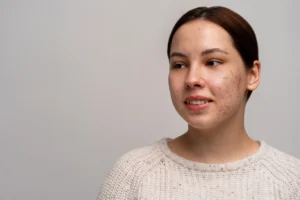Why do women get hormonal problem like acne?
Women naturally have low levels of testosterone. However, when women experience a hormonal imbalance, acne may develop. People with oily skin are also more prone to hormonal problem acne.
Recently, hormonal disorders like polycystic ovarian syndrome (PCOS) have become more common in women. PCOS can increase testosterone levels, which often leads to adult acne.
This explains who is more likely to get acne and the reasons behind its occurrence.
What kind of basic care should be taken by those who have acne?
People with acne can benefit from specific care routines. When selecting a face wash, use a soft cleanser or mild soap. Applying or massaging oil into the scalp of those with oily skin can worsen acne. In such cases, repeatedly applying the antibiotic clindamycin can help by killing the Propionibacterium bacteria and reducing acne.
To prevent worsening acne, avoid touching the face frequently, excessive scrubbing, and using oily moisturizers, as these can block pores and lead to more breakouts.
Caution: Steroid-Damaged Skin
Topical steroid-damaged skin has become a growing concern. Steroid creams severely harm the skin by reducing its local immunity, which allows Propionibacterium to thrive. This weakens the skin, causing more acne. Steroid creams also thin the skin, make blood vessels more visible, and increase sensitivity to sunlight, leading to frequent sunburns. This condition, called “topically steroid-damaged skin,” underscores why steroid or lightening creams are harmful to the skin.
Acne can also lead to pigmentation, leaving black marks across the face. Pigmentation and scarring are the two primary issues associated with acne.
